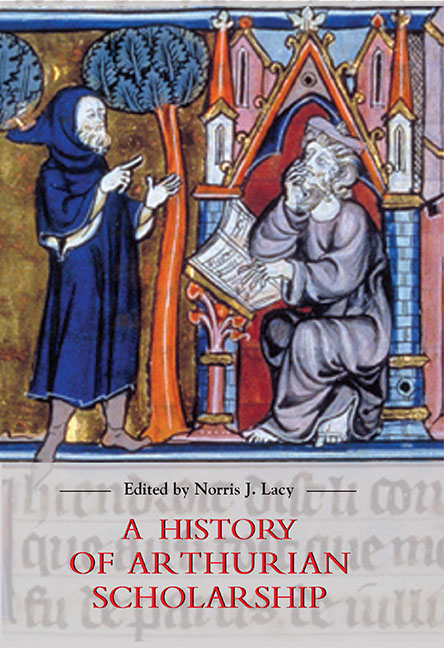Dutch Arthurian Literature
Published online by Cambridge University Press: 18 March 2023
Summary
The Early Stages
Ironically, the currently flourishing study of Arthurian literature in the Low Countries had a false start, as L.G. Visscher's 1838 publication of Ferguut, the thirteenth-century Middle Dutch rendition of Guillaume le Clerc's Fergus, was full of flaws. The many inaccuracies in this first complete edition of a Middle Dutch chivalric romance not only confirmed the editor's self-characterization as an autodidact, they served unintentionally as a teething ring (to borrow Willem Kuiper's expression) for young philologists. One of these critics, W.J.A. Jonckbloet, gaveMiddle Dutch literature the status of a scholarly discipline, by – among other things – writing a three-volume history of Middle Dutch literature and by publishing two groundbreaking editions of Arthurian texts.
In 1846 there appeared the editio princeps of the Roman van Walewein, a thirteenth- century indigenous romance written by the Flemish poets Penninc and Pieter Vostaert. This volume, containing the text of the poem only, was followed in 1848 by a book-length introduction and commentary of almost 350 pages. Jonckbloet supplied his readers with a wealth of information on, for example, Walewein as a character, other romances featuring Arthur's nephew as their protagonist (for instance, Le Chevalier à l’épée and Le Chevalier aux deux épées), the estimated date and the literary merits of Penninc and Vostaert's romance. For more than a century, until G.A. van Es's 1957 edition of Walewein appeared, Jonckbloet's publication remained the standard edition.
Like the first part of the Walewein edition, the first volume of Jonckbloet's monumental edition of the Lancelot Compilation, an early fourteenth-century Brabantine cycle of ten Middle Dutch Arthurian romances, was published in 1846. The 47,255 lines of the compilation's second book – the first book is not extant – were preceded by an introduction in which Jonckbloet discussed the relationship between prose and verse romances, asserted that Lodewijk van Velthem was the owner of the compilation, gave a short description of the sole surviving manuscript of the compilation (The Hague, Royal Library, MS 129 A 10) and discussed a non-contemporary hand (but see below), whose additions, changes and corrections Jonckbloet refused to include in his edition. Three years later, in 1849, the 26,980 (book three) and 13,054 (book four) lines of the second volume were preceded by an extensive introduction of about 250 pages.
- Type
- Chapter
- Information
- A History of Arthurian Scholarship , pp. 158 - 168Publisher: Boydell & BrewerPrint publication year: 2006
- 1
- Cited by



